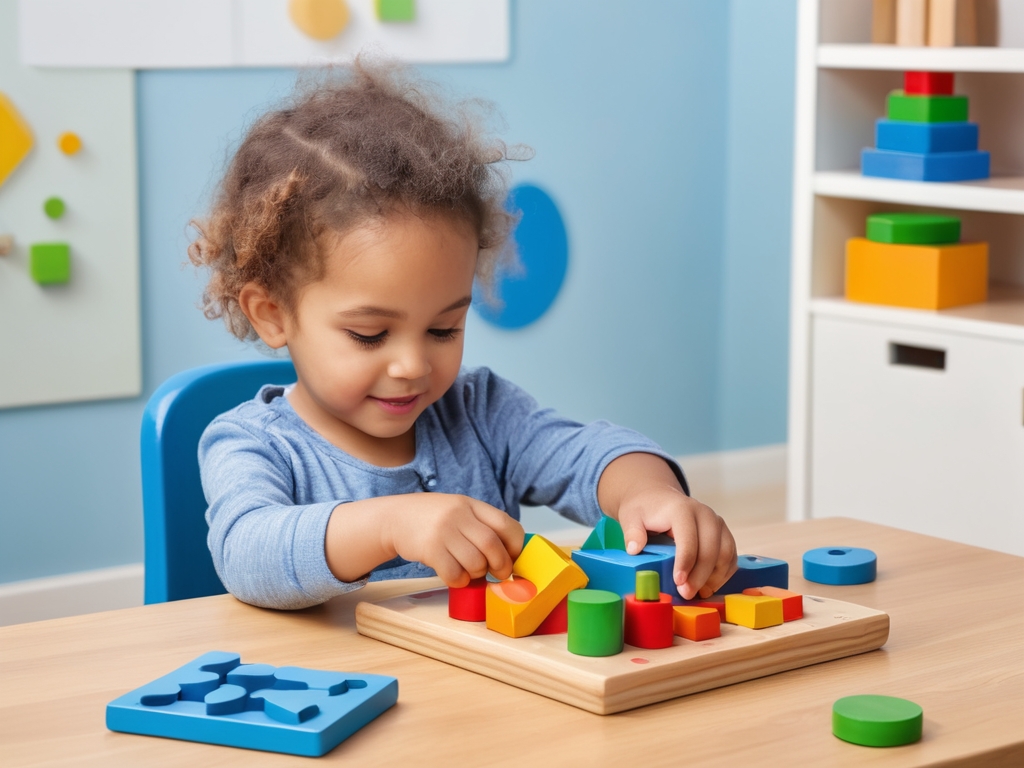
Have you ever watched a toddler slowly pour their own glass of juice, their hands trembling slightly with concentration—and then beam with pride when not a drop is spilled? That’s Montessori in action.
For many parents, the Montessori method feels like a mysterious blend of magic and mindfulness. It sounds wonderful, but also a little intimidating. Isn’t it just for private schools with wooden toys and silent classrooms?
Not at all.
The heart of Montessori is simple: Trust the child. Create an environment that supports their natural development. And give them the tools to grow into confident, compassionate, independent humans. Whether you’re a teacher, a caregiver, or a curious parent looking to create more meaningful routines at home, this guide is here to help you explore the Montessori method—no PhD or fancy classroom required.
1. What Is the Montessori Method?
The Montessori method is a child-centered educational approach that encourages independence, curiosity, and hands-on learning. Developed over a century ago, it’s built on the belief that children learn best when they’re free to explore within a structured and nurturing environment.
Montessori education emphasizes choice within limits, respect for the child, and a thoughtfully prepared space where every item has a purpose. It’s a way of seeing children as capable individuals, not empty vessels to be filled.
2. A Brief History: Who Was Dr. Maria Montessori?
Maria Montessori was an Italian physician, educator, and pioneer in child development. In the early 1900s, she began working with children considered “unteachable” and made a radical discovery: when given the right tools and environment, children flourished.
Her observations led to the creation of a new educational philosophy—one grounded in respect for a child’s natural learning rhythm. She opened her first classroom, Casa dei Bambini, in 1907. Since then, Montessori education has expanded to thousands of schools worldwide, influencing both early childhood education and parenting philosophies globally.
3. Core Principles of Montessori Education
3.1. Child-Centered Learning
Montessori classrooms—and homes—encourage children to choose their activities. This autonomy builds intrinsic motivation, or the joy of learning for its own sake. Instead of being told what to do, children follow their interests within a well-prepared environment, leading to deeper engagement and lasting learning.
3.2. The Prepared Environment
Montessori spaces are calm, beautiful, and designed from the child’s point of view. Shelves are low. Materials are easy to access. Everything has a purpose. This order and simplicity create a sense of security, focus, and respect.
3.3. Hands-On Learning
Montessori materials invite touch, movement, and exploration. Think beads for math, sandpaper letters for writing, or pouring water from pitcher to cup. These tactile experiences connect abstract ideas with concrete understanding.
3.4. Mixed-Age Classrooms
Children learn best not only from adults but also from each other. Montessori environments typically group children in three-year age spans (e.g., 3–6, 6–9). Older children act as mentors, and younger ones learn by observing and trying. This community fosters empathy, leadership, and collaboration.
4. Benefits of the Montessori Method
4.1. Cognitive Development
Montessori’s hands-on materials and self-paced learning help children deeply understand concepts rather than memorize facts. Studies have shown Montessori students outperform peers on standardized math and reading tests, and also demonstrate better executive functioning skills like attention and working memory (Lillard et al., 2017).
4.2. Social Skills Enhancement
Because of the mixed-age structure and respectful interactions, Montessori children often show more prosocial behavior, such as helping, sharing, and cooperating. They practice conflict resolution and empathy daily.
4.3. Emotional Growth
Montessori education honors emotions. Children learn to recognize their feelings, regulate responses, and express themselves in respectful ways. Teachers model calm, patient guidance, supporting emotional literacy and resilience.
4.4. Independence and Responsibility
From zipping their coat to setting the table, Montessori children develop practical life skills. This builds self-confidence and a strong sense of agency—”I can do it myself” isn’t just cute; it’s powerful.
5. Montessori Materials and Resources
5.1. Essential Montessori Materials
Montessori materials are designed to be self-correcting, meaning children can see and fix mistakes without adult intervention. A few iconic examples:
- Pink Tower – Ten pink wooden cubes build spatial awareness and size discrimination.
- Sandpaper Letters – Help children associate sounds with letters through touch.
- Moveable Alphabet – Encourages writing and spelling before formal handwriting.
- Golden Beads – Teach place value and operations in math visually and tangibly.
5.2. Creating a Montessori-Inspired Environment
You don’t need a full classroom setup. Start with:
- Low, accessible shelves
- Child-sized furniture and utensils
- Trays or baskets for activities
- Natural materials (wood, metal, fabric)
- A clutter-free, inviting atmosphere
Even small apartments can have a corner set aside for Montessori work and play.
6. Implementing Montessori at Home
6.1. Setting Up a Montessori Space
Start small: a basket with real kitchen tools for snack prep or a child-height hook for coats. Keep things simple and organized. Rotate toys and activities so your child isn’t overwhelmed. Display just a few quality items at a time.
6.2. Choosing Appropriate Activities
Match tasks to your child’s developmental stage:
- Toddlers: pouring water, matching socks, stacking
- Preschoolers: sweeping, buttoning, transferring with tongs
- Elementary: journal writing, cooking, simple sewing
Focus on “practical life” skills—real tasks children see you doing every day.
6.3. Encouraging Independence
This might mean allowing messes, delays, or do-overs. It could look like your toddler putting on their shoes the wrong way at first—or your five-year-old slicing a banana with a child-safe knife. Be patient. Celebrate effort over perfection.
6.4. Establishing Routines
Children thrive on predictable rhythms. Create routines that allow choice within structure—morning checklists, quiet time after lunch, shared evening chores. Consistency builds security.
7. Challenges and Solutions
7.1. Common Misconceptions
“Isn’t Montessori just for wealthy families?”
Not at all. While some private Montessori schools are expensive, the method itself can be practiced at home with minimal cost. It’s more about mindset than materials.
“Won’t too much freedom lead to chaos?”
Montessori offers freedom within limits. Children have choices, but those choices occur within boundaries you thoughtfully prepare.
7.2. Dealing with Resistance
If your partner, parents, or others don’t quite get it—don’t worry. Start small, share your reasoning kindly, and let the results speak. When others see your child calmly preparing their snack or folding laundry with joy, they may come around.
7.3. Balancing Structure and Freedom
Montessori isn’t a free-for-all. It’s about guiding children to make purposeful choices. You might say, “You can choose to work with your puzzle or your blocks. When you’re done, put it back on the shelf.”
8. Montessori for Different Age Groups
8.1. Infants and Toddlers (0–3 years)
- Floor beds instead of cribs allow freedom of movement.
- Use mobiles, mirrors, and open play mats.
- Set up baskets with real objects: a brush, spoon, or keys to explore.
8.2. Preschoolers (3–6 years)
- Focus on sensorial and practical life work: washing a table, arranging flowers.
- Introduce early math and literacy materials, but follow the child’s interest.
- Encourage care of the environment—watering plants, feeding pets.
8.3. Elementary (6–12 years)
- Dive into research projects on topics of interest.
- Provide time for outdoor exploration and community service.
- Foster social collaboration through shared projects or discussions.
8.4. Adolescents (12+)
- Emphasize real-world tasks: budgeting, cooking meals, volunteer work.
- Encourage identity development through journaling, art, and mentorship.
- Give increasing autonomy while maintaining warm connection and support.
9. Real-Life Examples and Testimonials
Sarah, a mom of two in the UK, shared how her three-year-old began making her own breakfast each morning using a small step stool, a tiny pitcher of milk, and a cereal jar. “It started with a few spills,” she laughed, “but now she beams with pride every morning. It’s such a small thing, but it’s changed how we start our day.”
Amir, a dad from Toronto, explained how Montessori routines helped his neurodivergent son stay focused and feel more in control. “He thrives with the predictability and calm of our setup. It’s a game-changer for us.”
10. Resources for Further Learning
10.1. Recommended Books
- The Montessori Toddler by Simone Davies
- The Absorbent Mind by Dr. Maria Montessori
- Montessori: The Science Behind the Genius by Angeline Stoll Lillard
10.2. Online Courses and Workshops
10.3. Montessori Organizations and Communities
- Association Montessori Internationale (AMI)
- North American Montessori Teachers’ Association (NAMTA)
- Facebook groups: “Montessori at Home,” “Montessori 101,” and local co-ops
11. Conclusion
Montessori isn’t about being perfect. It’s about slowing down, seeing your child clearly, and building a home where learning and living are one and the same. You don’t need expensive materials or a fancy degree. You just need curiosity, trust, and a willingness to try.
Whether your child is pouring their own juice, tying their shoes, or researching how volcanoes work, Montessori helps them find their path—with joy, purpose, and confidence.
So take a deep breath, set out a small tray, and watch the magic unfold.mplications are almost endless. We know that many will benefit from the information within this text, shall grow in the knowledge and love of “their” children and, more importantly, also in the love of being who they are.

